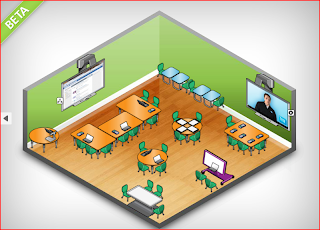Premise for this blog: True Architecture is always a response to paradigm shifts that happen in an ever-changing society. A particular interest to me is the design of Educational Spaces. As educational theories and
models continue to change and evolve the architecture of
learning spaces needs to respond to those changes. This blog is an attempt to
capture the best ideas on the fluid nature of architecture and learning
space design.
I recently found a great website where you can design your own classroom with a limited set of furniture and technology items that begins to start a discourse about what a 21st century classroom should look like.
http://www.teq.com/classroom
Check it out whether you are a designer, student, teacher, or parent it stops and makes you think. Let me know if you post a design there, I'm interested to see other people's thoughts. Below are a couple ideas that people have posted of their classroom designs. Let me know what you think.



